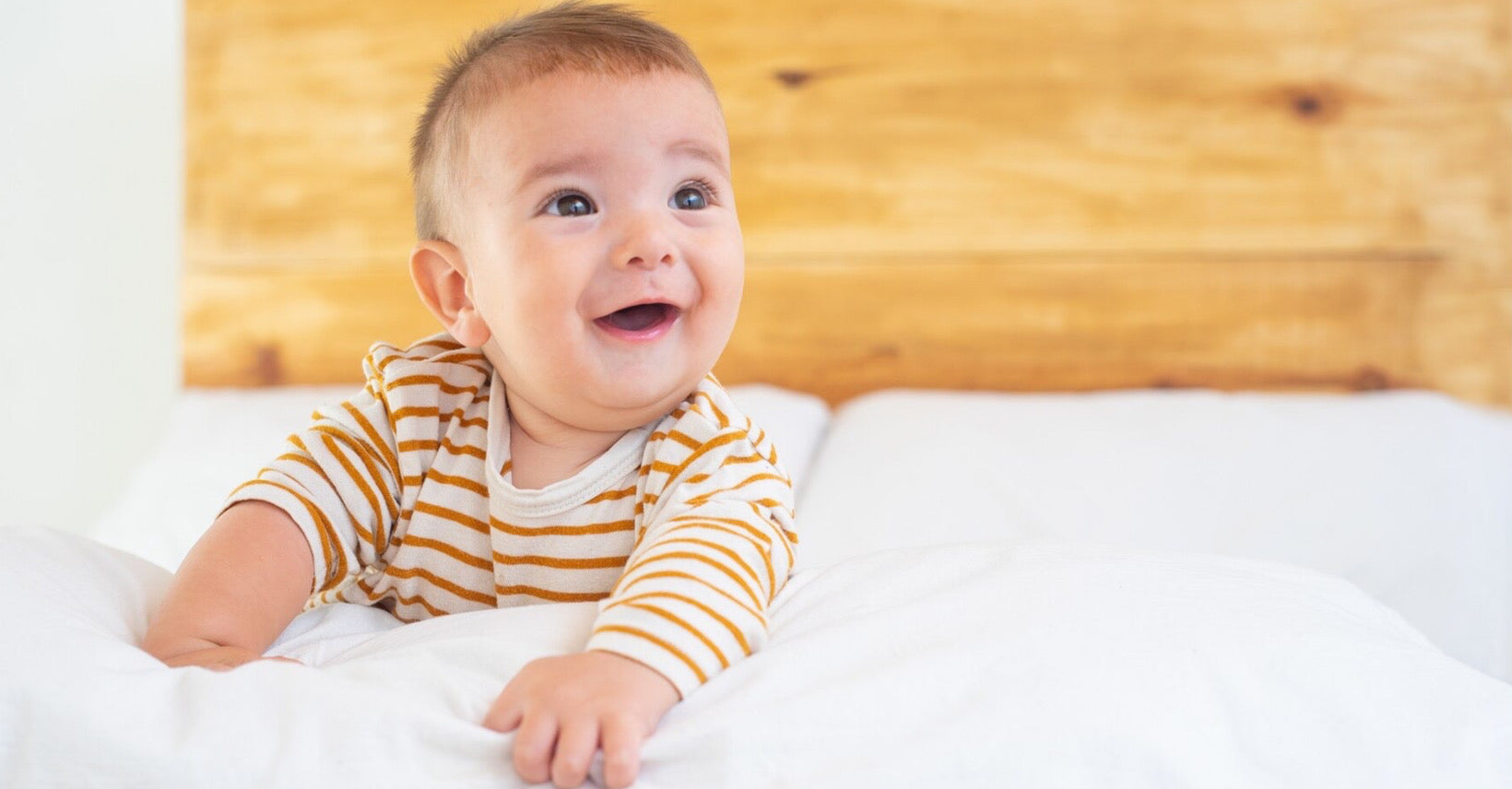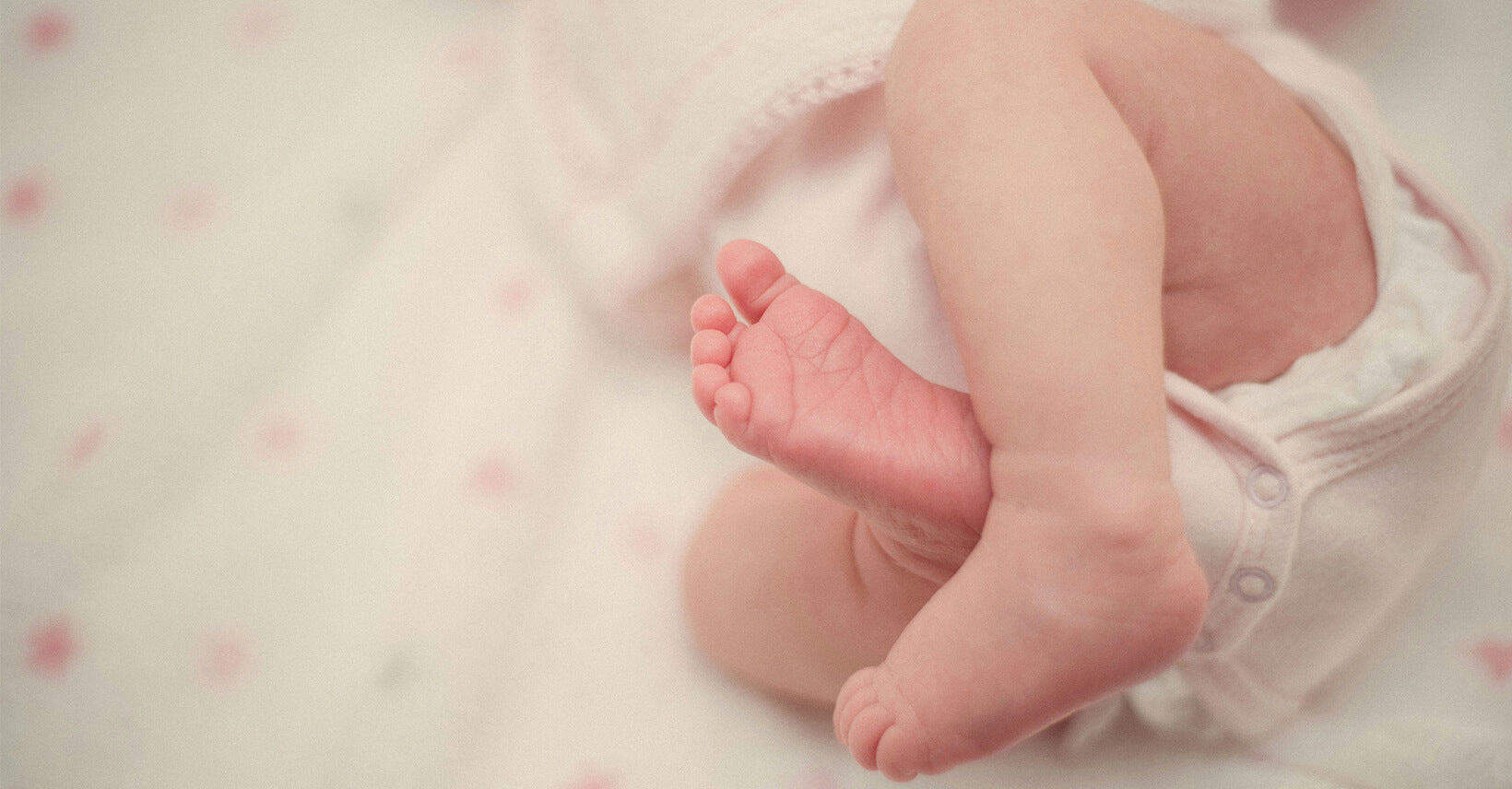
What do Babies Think About When They Smile?
Every new parent knows the joy of seeing your little one's first smiles. But have you ever wondered what could possibly be going through their tiny minds during those precious grinning moments? More than just an expression of delight, researchers now believe a baby's smile is far more complex than we may realize. In this article, Kaiya baby explore some of the fascinating theories about what babies think, feel and process internally when they flash those gummy grins that can light up a room. We'll dive into whether they experience true happiness while smiling, what their sweet dreams might involve, the impact of parental smiles, and more. Our goal is to provide insight into the rich inner lives of our smiling babies and gain a deeper understanding and appreciation for even their earliest social interactions and expressions.
Are babies actually happy when they smile?
Smiling in early infancy is primarily a reflex response rather than an expression of emotion. It helps reinforce social bonding and interacts.
Around 2-3 months, babies start to smile socially in response to human faces and voices. This suggests they find social interactions pleasant.
Smiling releases feel-good neurotransmitters like dopamine and endorphins in the brain. So physiologically, smiling is linked to positive emotion.

Studies find babies smile more when playing with engaging caregivers versus being left alone. Social engagement seems rewarding.
Smiles tend to occur after basic needs are met, implying some level of comfort and satisfaction. Babies often smile during nursing or carrying.
They smile more frequently with familiar people versus strangers, signaling social smiles recognize familiar caregivers.
However, babies don't necessarily have nuanced conscious feelings of happiness the way older children and adults do. Smiles may not fully reflect complex emotions.
Multiple factors likely contribute to smiles, from reflex responses to social interaction pleasures to basic physical comfort. True "happiness" may be an overinterpretation for pre-verbal infants.
While smiles do appear linked to enjoyment on some level, attributing deep subjective happiness may be premature for babies still developing emotionally. It's a complex subject.
What do babies dream about when they smile?
Connecting with caregivers. Babies spend their days bonding with parents/siblings through smiles, touch and play. Dreaming of warm interactions could elicit positive emotions.
Familiar sights, sounds, smells. Pleasant sensations from waking experiences like nursing, bath time or tummy time may be replayed.
Exploration of the world. Curious babies discover colors, shapes, textures throughout the day. Nocturnal smiles could represent dream exploration.
Feelings of safety and love. Even asleep, babies "remember" that caregivers meet their needs. Smiles may communicate unconscious comfort.
Sucking and swaddling pleasures. Oral habits and being securely wrapped provoke happy neurotransmitters. Babies may relive these soothing experiences.
Their own smiling reflected back at them. Infants are captivated by faces - dreaming of engaged social smiles could trigger joy.
Colors, sounds, simple concepts rather than stories. Without language, baby dreams center around sensory elements, not narratives.
Physiological relaxation. Smiles may indicate peaceful states as the body restores itself through restful REM sleep.
Do babies like when you smile at them?
Smiling is intrinsically social and comforting. A caregiver's smile signals safety, warmth and connection to the baby. Babies are highly attuned to human faces from birth. Our facial expressions help teach them about emotion. Smiles are loved.
Smiling releases feel-good endorphins in both baby and caregiver brains, enhancing bonding. Babies mirror smiles.
Studies find babies pay extra attention to happy smiling faces over faces showing other emotions. Smiles attract their focus. They smile more and react less fussily when engaged with a smiling, cheerful caregiver versus a relaxed neutral face.
Cultural universals show parents across populations tend to smile broadly at babies, signaling smiles promote bonding. Around 2-3 months, babies start socially smiling specifically in response to smiles directed at them from familiar people. Oral-motor play is soothing, and smiling engages a baby in natural mimicry that stimulates learning and pleasure.
So in many ways, babies seem predisposed to find the human smile reassuring, amusing and worth engaging with.
What does it mean when a baby stares at you smiling?
Social bonding/attachment. Prolonged smiles and eye contact help reinforce the emotional connection between baby and caregiver.
Curiosity and learning. Babies are absorbing information about human faces, expressions and emotions during these interactions.
Enjoyment of the social experience. Sustained smiling suggests the baby finds gazing at and engaging with the caregiver inherently rewarding and pleasant.
Mimicry and imitation. Mirroring another's smile is how babies start to understand smiling as an intentional social behavior and emotional expression.
Stimulation and stimulation. Smiling back and forth engages the baby's developing brain and fuels interactions that stimulate learning.
Comfort and safety. The trusted caregiver's smile provides reassurance during what is basically social play for babies.
Seeing one's own smile reflected builds self-awareness slowly over time. Babies start to recognize smiles are connected to internal feelings.
Do babies have the same smile as adults?

Here are a few key points about differences and similarities between baby smiles and adult smiles:
Reflex vs intentional: Early smiles in the first few months are reflex responses to stimuli like movement or sound, not yet truly social or expressing emotion. Adult smiles are usually intentional signs of feeling.
Symmetry: Baby smiles tend to involve only one side of the face at first due to incomplete neural development. Adult smiles engage both sides synchronously.
Teeth: Lacking teeth, a baby's smile is more gummy and open-mouthed. Adult smiles commonly show teeth.
Duration: Initial smiles are brief reflexes, but babies learn to sustain eye contact and smiles longer over time as social interaction skills develop.
Context: Babies smile socially in response to caregiver smiles from around 2 months. Adults smile to convey wider ranges of emotion to larger social groups.
Experience: Repeated smiling helps wire the neural circuits for emotional control. Adult smiles demonstrate a lifetime of emotional nuance.
Physiology: Both elicit similar dopamine releases and have bonding effects through mirror neuron activation. Smiles are innate and universal.
So in essence, smiles fundamentally serve the same social and emotional functions but differ in execution depending on developmental and experience factors. Purpose and impact share more similarities than differences.
Conclusion
In closing, the more we study those cherubic baby smiles, the more we appreciate their complexity and importance. Far from simple reflexes, smiles serve vital social, psychological and neurological functions that lay the groundwork for emotional intelligence. While their smiles may not contain the nuanced feelings of older children and adults, observing babies' joy during interactions gives us hints into their budding inner lives, awareness of others, and capacity for building relationships. Those fleeting grins are windows into developmental milestones being achieved each day through nurturing care, play and shared smiles. And in making eye contact and mirroring our own expressions, our babies begin learning emotionally-resonant lessons that last a lifetime. Their smiles are truly among life's greatest gifts.

Yujia Shi
An expert in sleep sack design, is a valued contributor to Kaiya Baby's blog. With a strong background in baby sleep bags and maternal care, she is highly regarded for her professionalism. Yujia Shi prioritizes baby comfort and safety in her designs, using high-quality materials. Her insightful articles on sleep bags have been featured in reputable publications and have gained a significant readership. Trust Yujia Shi to help you create a comfortable and safe sleep environment for your baby, backed by her proven track record in the industry.



Leave a comment
This site is protected by reCAPTCHA and the Google Privacy Policy and Terms of Service apply.